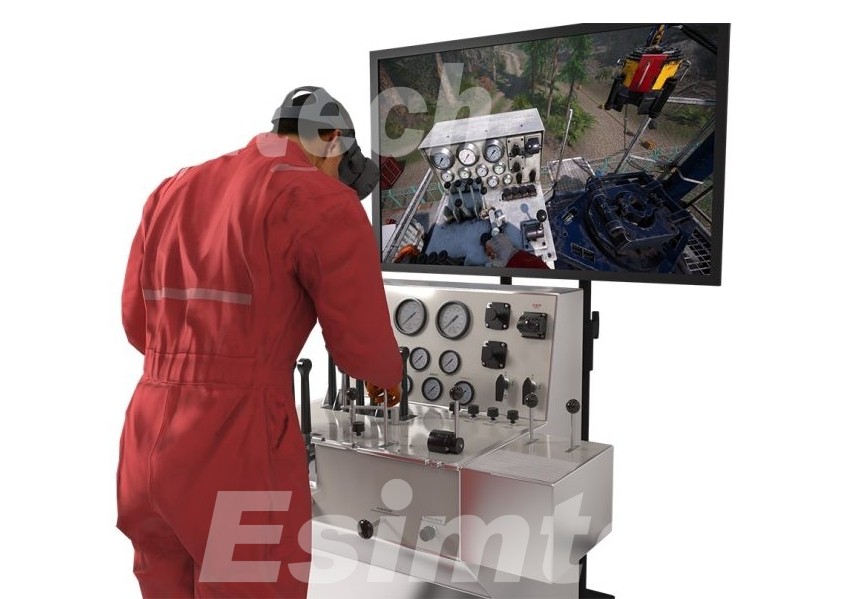VR in Oil and Gas Enhance Worker’s Soft Skills
The development of the oil and gas industry depends on a skilled workforce. But beyond technical expertise, success depends on a crucial but often overlooked aspect: soft skills. This article explores why soft skills are critical in the oil and gas industry, the limitations of traditional training methods, and how virtual reality (VR) in oil and gas is revolutionizing the way workers develop these essential competencies.
Why Soft Skills Matter in Oil and Gas

Soft skills include a range of interpersonal and self-reflective abilities that enable effective communication, collaboration, problem solving, and critical thinking. These seemingly secondary skills play an unexpectedly important role in ensuring safety, efficiency and even innovation in the oil and gas industry. Let’s take a deeper look at why soft skills deserve a place at the forefront of oil and gas workforce development:
- Safety first: Oil and gas operations are inherently dangerous. Clear and concise communication is essential to prevent accidents. Workers need to effectively communicate critical information, accurately understand instructions, and collaborate seamlessly in high-pressure situations. For example, if a crew identifies a potential equipment failure, their ability to clearly articulate the problem and work effectively with colleagues to resolve it directly impacts overall safety.
- Improve efficiency: Strong collaboration can streamline processes and resolve issues faster. Effective communication ensures that everyone in the team is on the same page, minimizing errors and delays. Consider drilling operations. When geologists, engineers, and rig crews can communicate complex data and collaborate effectively, adjustments can be made quickly to optimize drilling efficiency and maximize productivity.
- Decisions under pressure: Complicated situations often arise on oil and gas RIGS. Sudden equipment failures, unexpected geological formations, or volatile market conditions all require quick, informed decisions. Critical thinking and problem solving skills are essential to analyze situations, consider potential solutions, and make choices that prioritize safety, cost-effectiveness, and compliance with regulations.
- Fostering innovation: The oil and gas industry continues to evolve and requires a workforce that can adapt and innovate. Effective communication facilitates the exchange of ideas across departments, facilitates the cross-pollination of knowledge, and provides creative solutions to complex challenges. In addition, strong interpersonal skills encourage collaboration between different teams and foster an innovative culture of openly sharing and refining ideas.
Challenges of Traditional Soft Skills Training

While traditional soft skills training methods have their place, they often fall short in adequately preparing workers for the complexities of the oil and gas industry. Let’s delve deeper into the limitations of these methods:
- Limited Engagement: Traditional methods like lectures and classroom discussions can be passive and fail to capture the attention of learners. Soft skills are best developed through active participation and experience. Sitting through lectures or presentations might not resonate with everyone’s learning style, leading to disengagement and ultimately hindering skill development.
- Safety Concerns: The oil and gas industry demands practice in high-pressure situations. Traditional methods often struggle to simulate these scenarios realistically without putting trainees at risk. Role-playing exercises, for example, can feel contrived and lack the element of real-world consequence. This can limit the effectiveness of the training, as workers may not fully grasp the importance of soft skills in critical situations.
- Transfer of Learning: A major challenge with traditional methods lies in the gap between learning and application. Trainees might grasp the concepts presented in lectures or role-playing exercises, but applying those skills effectively in real-world situations can be difficult. Traditional methods often lack opportunities for practical application and feedback, making it challenging for workers to translate learned skills into concrete behaviors on the job.
These limitations can leave a gap in a worker’s preparedness, potentially impacting safety, efficiency, and decision-making on the job. VR technology offers a solution by addressing these challenges and creating a more engaging, realistic, and transferable training experience for developing crucial soft skills in the oil and gas industry.
How VR in Oil and Gas Training Enhance Soft Skills

The oil and gas industry relies on more than just technical know-how. Strong communication, teamwork, and problem-solving skills – all soft skills – are crucial for safety and success. Traditional training methods often fall flat, leaving workers unprepared for real-world challenges.
This is where VR steps in. VR training creates realistic simulations where workers can practice soft skills in a safe, controlled environment.
Here’s how VR makes soft skills training in oil and gas more effective:
- Learning by Doing: VR puts workers right in the action, letting them experience the pressure and emotions of real-world situations. This immersive learning helps them understand how soft skills play out in practice.
- Safe Practice for Risky Situations: Traditionally, practicing soft skills in high-risk scenarios meant real-world dangers. Through VR simulation training, workers can navigate complex situations like equipment failures or tense negotiations without any real-world consequences. This builds confidence and hone skills before they’re needed.

- Targeted Training: VR training isn’t a one-size-fits-all solution. Programs can be customized to address specific needs. A new rig supervisor can focus on communication and delegation, while a seasoned engineer can work on conflict resolution. This targeted approach ensures workers develop the most relevant skills.
VR training doesn’t stop at practice. Trainers can monitor performance and provide feedback within the VR environment. Workers can see their strengths and weaknesses, then adjust their approach in future simulations. This “learn by doing” approach makes soft skills training more engaging and effective.
By utilizing VR technology, oil and gas companies can equip their workforce with the well-rounded skillset needed to navigate the complexities of the industry. VR doesn’t replace technical training, but it empowers workers with the soft skills needed to excel in a demanding and ever-evolving field.
Conclusion
In the oil and gas industry, where safety, efficiency, and teamwork are paramount, the role of soft skills cannot be underestimated. Traditional training methods often fall short in effectively imparting these critical skills. Virtual reality offers a groundbreaking alternative, providing immersive, realistic, and scalable training solutions. By integrating VR into their training programs, oil and gas companies can significantly enhance their workforce’s soft skills, leading to improved safety, productivity, and overall operational success.
